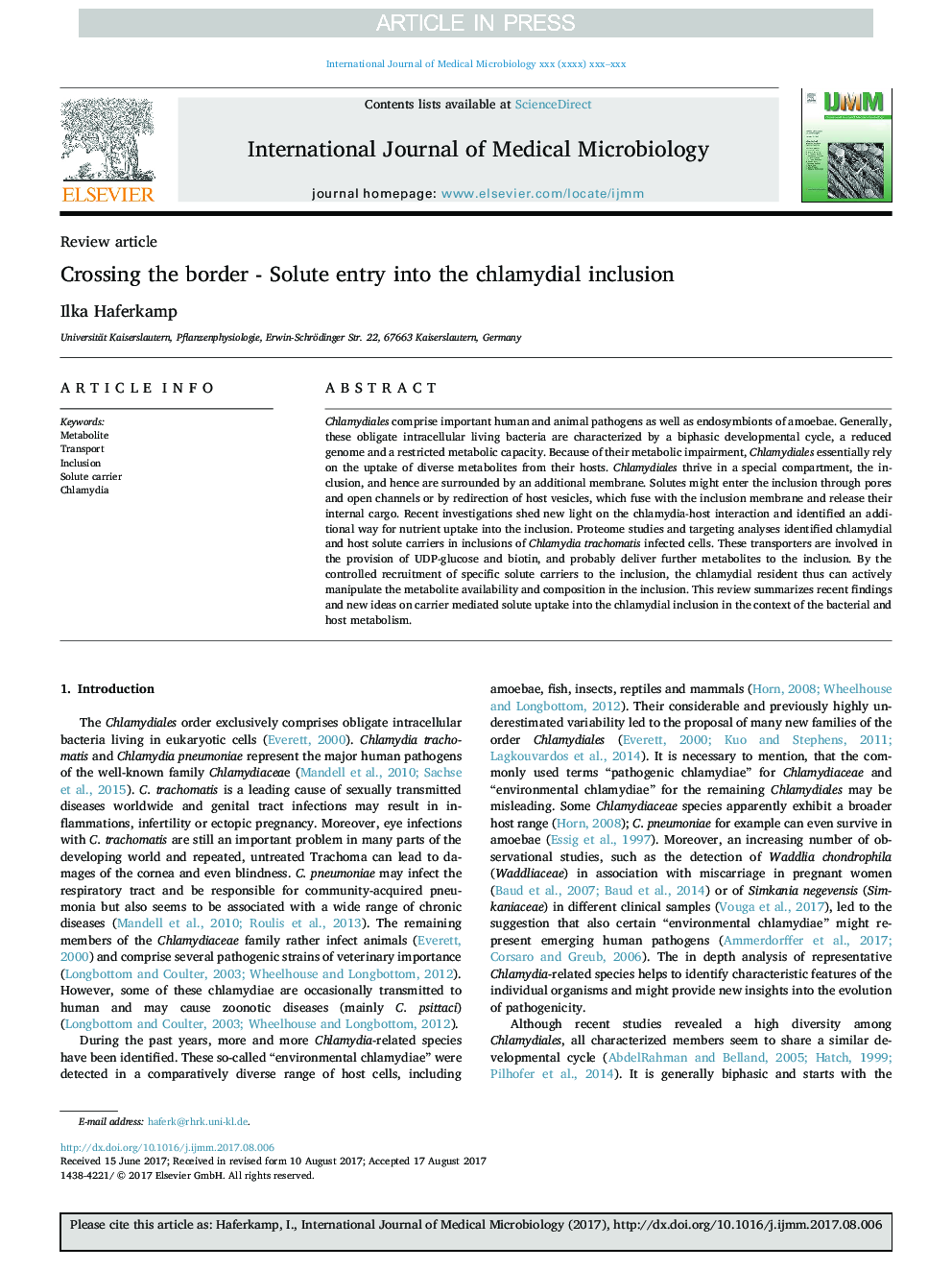| Article ID | Journal | Published Year | Pages | File Type |
|---|---|---|---|---|
| 8384987 | International Journal of Medical Microbiology | 2018 | 8 Pages |
Abstract
Chlamydiales comprise important human and animal pathogens as well as endosymbionts of amoebae. Generally, these obligate intracellular living bacteria are characterized by a biphasic developmental cycle, a reduced genome and a restricted metabolic capacity. Because of their metabolic impairment, Chlamydiales essentially rely on the uptake of diverse metabolites from their hosts. Chlamydiales thrive in a special compartment, the inclusion, and hence are surrounded by an additional membrane. Solutes might enter the inclusion through pores and open channels or by redirection of host vesicles, which fuse with the inclusion membrane and release their internal cargo. Recent investigations shed new light on the chlamydia-host interaction and identified an additional way for nutrient uptake into the inclusion. Proteome studies and targeting analyses identified chlamydial and host solute carriers in inclusions of Chlamydia trachomatis infected cells. These transporters are involved in the provision of UDP-glucose and biotin, and probably deliver further metabolites to the inclusion. By the controlled recruitment of specific solute carriers to the inclusion, the chlamydial resident thus can actively manipulate the metabolite availability and composition in the inclusion. This review summarizes recent findings and new ideas on carrier mediated solute uptake into the chlamydial inclusion in the context of the bacterial and host metabolism.
Related Topics
Life Sciences
Biochemistry, Genetics and Molecular Biology
Biochemistry, Genetics and Molecular Biology (General)
Authors
Ilka Haferkamp,
